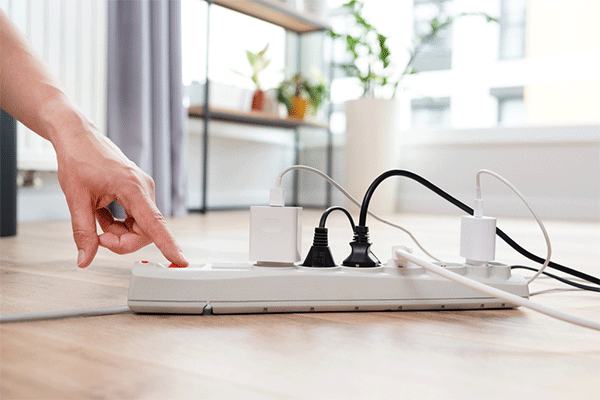Slash Your Electric Bill With DIY Fixes
With the high cost of electricity these days, there are ways to reduce your usage and therefore your monthly bills with some simple DIY fixes. When you are aware of your energy consumption, making small changes can make a big difference in your monthly expense.
The first simple thing you can do is to turn off lights when you are not in that room. Leaving lights on can add to your bill and cost more in the long run. It’s also advantageous to change your light bulbs to energy efficient bulbs such as LED, which have been proven to use less energy than incandescent, and also last longer than regular light bulbs. This can save money because you don’t have to replace them as often. In fact, some LED bulbs have a ten-year life span so even if they cost more initially, in the long run you will save on replacement costs.
Smart bulbs are also a way to save electricity. You can set a schedule to turn lights on and off, and they also have a brightness feature so you can set the bulb to a dimmer brightness which also takes less energy to run. If you have Alexa or Google Assistant, you can also use voice commands, and set schedules, to turn lights on and off.
Smart home programmable devices such as plugs and bulbs can help you set up your home to run more efficiently and reduce energy consumption at the same time. You can also buy rechargeable lights, such as strips that mount with a magnetic strip under cabinets, which are motion activated. These lights also come in a variety of shapes, such as round ones for stairways, which makes it convenient to be able to see, and not have to turn lights on and off, further saving on your electric bills.
Another logical but sometimes overlooked way to save energy is to simply turn off and unplug devices when not in use. Electronics such as computers, televisions and even power strips will draw a certain amount of energy even when they are off. This is known as “phantom power” that can add to the cost of your electricity bill. By unplugging devices when not using them, you can eliminate this added expense.
Most power companies offer information regarding your usage. If your bill has a chart you can see what types of energy you are being charged the most for. This can be devices and lights that are always on, appliances such as your washer, dryer and dishwasher, and your stove. It can also tell you the peak times when rates are higher. If you can adjust your usage to when the rates are lower you can reduce your consumption and therefore your monthly bill.
For example, if peak time ends at 8 p.m., set your dishwasher to run after than time. You can also wash laundry in warm or cold water and line dry your clothes, then fluff them in the dryer on a cool setting after they dry, which takes less energy to run.
When shopping for new appliances, look for the Energy Star label and choose those that have a low consumption rating. These labels will show the average annual cost to run the appliance, which can save considerably if you choose one with a low usage rating.
Another way to save on energy costs, is to button up any drafts in your home which cause heating and cooling loss. Seal around doors and windows as well as electric outlets, and add insulation to your attic to prevent heat loss in winter and keep your home cooler in summer.
By take small steps to make your home more energy efficient, you can save big in the long run. Not only will this reduce your energy consumption, you will help the environment at the same time by reducing your carbon footprint.




Post Comment